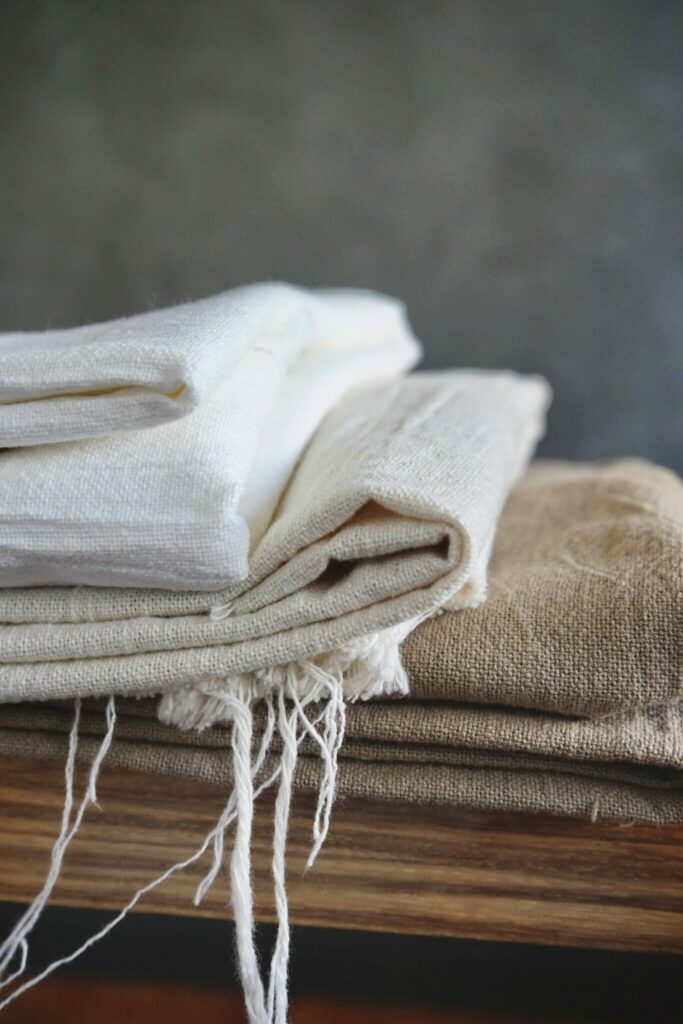Your cart is currently empty!

7 Slow Fashion Tips
We are here to share with you the simple things we can all do in our daily life to lower the carbon footprint of our wardrobe and engage in slow fashion.
The average European consumer buys 26.7kg of clothing each year.
Want to take action? Interested in how to engage in slow fashion? Now we share with you our blog with our top tips for shopping sustainably. Read on to find out how you can lower the carbon footprint of your wardrobe.
Buy Second-Hand
Purchasing from charity shops has always been a great way to find cheap items and avoid fast fashion. Online shops such as Ebay, depop, and Vinted are also great options for buying from your favourite high street shop, but in a way that is both cheaper and better for the environment.
Putting your unused clothes on these apps or donating to charity is a great way to earn some money or support a good cause. 1 in 6 adults throw their unwanted clothing away in the bin, but through donating or selling we can save give our old favourites to a new home.
Pay Attention To Fabrics

Buying fabric that is long-lasting is a great way to be more sustainable. If we do buy new, it is good to always check what material it is made from. Fabric such as polyester contains many micro-plastics, for example, which can pollute the water when it is washed. Cheaper fabrics may also not last as long, and fall apart easily.
Buying clothing made from recycled materials can be a great option, such as recycled cotton or recycled water bottles.
Linen is another great option if you want to buy sustainable fabric. Made from flax plant fibres, it needs little water and can grow without the use of herbicides or pesticides. Not only this, but it is a long-lasting material that softens with age. It can be an item to cherish for generations. Purchasing linen may cost more, but it lasts longer and can be cheaper in the long-run.
Purchasing clothing from shops that use dead-stock fabric is another great option.
Up-cycle Your Clothes

In our blog on low waste living, we share more detail about the different things we can do with clothes we no longer wear. There are many ways in which we can prolong their life! If an item of clothing is still wearable but you just don’t reach for it anymore, an option could be to add embroidery. Painting jeans or adding patches can be other creative ways to change it up. These can then be gifted or worn by you as a way to make it feel new.
Do Your Research
Some high street shops may claim they are sustainable, but are they really? Before we buy from them because they say they are ‘green’ or ‘conscious’ really look at what it is that they do. What materials do they use? What are the working conditions of their employees? How much are you paying for this item? Look into what they do, or if you can’t see then ask them on social media.
Clothes Sharing

This can be a really fun way to wear different clothes but in a way that is both cheap and sustainable. Swapping clothes or borrowing from friends or family can particularly be a good idea if you need an outfit for a one-time occasion. This can really reduce throwaway fashion and people wearing items of clothing for just one use.
Set Yourself A Challenge
Setting yourself a goal of only buying 5 pieces of new clothing a year, or even better none at all, can be a way of giving yourself a challenge and reducing the footprint of your wardrobe.
Offset
If you cannot buy sustainably or second-hand, but want to lower your impact from fast fashion, then offsetting could be a great way to do this. There are many offsetting options but by paying a small amount you can either plant trees or support other environmental and humanitarian causes. This can be a way to balance your impact when buying from fast fashion.
Leave a Reply